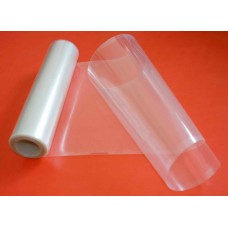Membranen

Membranen dienen dem Stofftransport zwischen zwei Fraktionen. Man meint damit in der Regel mechanische Trennverfahren zur Separation aus gasförmigen oder flüssigen Stoffströmen unter Verwendung technischer Membranen.
Eine Protonen-Austausch-Membran, häufig auch Proton Exchange Membrane (PEM) oder Polymer Electrolyte Membrane (PEM) genannt, ist eine im Allgemeinen aus Ionomer hergestellte semipermeable Membran. PEMs sind für Protonen durchlässig, während der Transport von Gasen wie beispielsweise Sauerstoff oder Wasserstoff verhindert wird. Zu diesem Zweck kommen die PEMs in erster Linie bei Polymerelektrolytbrennstoffzellen zum Einsatz. Hergestellt werden sie entweder aus reinen Polymer- oder aus Kompositmembranen, bei denen andere Materialien in eine Polymermatrix eingebettet werden. Die kommerziell am weitesten verbreitete PEM ist Nafion des Chemiekonzerns DuPont.
AMI-7001 Anionenaustauschmembran
Technische Daten der Anionenaustauschmembran AMI 7001 von Membranes International: ..
59,50€ Netto 50,00€
CMI-7000 Kationenaustauschmembran
Technische Daten der Kationenaustauschmembran (Protonenaustauschmembran) CMI 7000 von Membranes Inte..
59,50€ Netto 50,00€
Frontcell™ Perfluorosulfonsäureharz (PFSA) Harz, Pulver, 20 g
PFSA Membranen werden oft verwendet, um die Anoden von Kathoden in Elektrolysereaktoren oder Brennst..
357,00€ Netto 300,00€
Frontcell™ PFSA 130 Membran
PFSA Membranen werden oft verwendet, um die Anoden von Kathoden in Elektrolysereaktoren oder Brennst..
285,60€ Netto 240,00€
Frontcell™ PFSA 180 Membran
Frontcell™ Membranen werden oft verwendet, um die Anoden von Kathoden in Elektrolysereaktoren oder ..
357,00€ Netto 300,00€
Frontcell™ PFSA 260 Membran
PFSA Membranen werden oft verwendet, um die Anoden von Kathoden in Elektrolysereaktoren oder Brennst..
452,20€ Netto 380,00€
Frontcell™ PFSA 360 Membran
PFSA Membranen werden oft verwendet, um die Anoden von Kathoden in Elektrolysereaktoren oder Brennst..
130,90€ Netto 110,00€
Frontcell™ PFSA 50 Membran
PFSA Membranen werden oft verwendet, um die Anoden von Kathoden in Elektrolysereaktoren oder Brennst..
166,60€ Netto 140,00€
Nafion™ 115-Membran
Nafion™ Membranen werden oft verwendet, um die Anoden von Kathoden in Elektrolysereaktoren oder Bren..
499,80€ Netto 420,00€
Nafion™ 117-Membran
Nafion™ Membranen werden oft verwendet, um die Anoden von Kathoden in Elektrolysereaktoren oder Bre..
107,10€ Netto 90,00€
Nafion™ NR212-Membran
Nafion™ Membranen werden oft verwendet, um die Anoden von Kathoden in Elektrolysereaktoren oder Bren..
297,50€ Netto 250,00€





